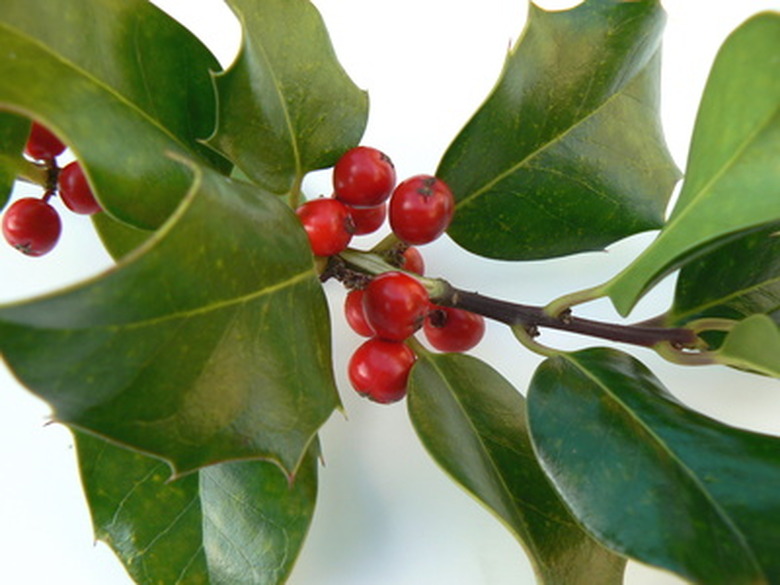Poisonous Holly Plants
There are over 300 species of holly shrubs; approximately 20 of them are native to the United States. Holly shrubs may be deciduous or evergreens. All hollies produce a berry that sustains several species of birds during the harsh winter. Although holly berries aren't poisonous to birds, they are toxic to humans. Ingesting more than three berries can cause nausea, stomach pain, diarrhea and vomiting. If holly berry poisoning is suspected, seek immediate medical attention.
Fosters Holly
Often used as a bonsai, in containers and as buffer strips around parking lots, the Fosters holly (Ilex x attenuata 'Fosteri') is a hardy evergreen holly that reaches heights between 15 and 25 feet and has an 8- to 12-foot spread. Fosters holly grows in USDA Zones 6 through 9; it needs sun to partial shade to thrive. The foliage is green, 2 to 4 inches long and oval shaped. Bright red fruit appears on the holly during the winter. The berries are poisonous if eaten by humans and some animals.
- There are over 300 species of holly shrubs; approximately 20 of them are native to the United States.
- All hollies produce a berry that sustains several species of birds during the harsh winter.
Shamrock Inkberry Holly
The glossy, dark-green leaves of the shamrock inkberry holly (Ilex glabra) are oval in shape and are 2 to 3 inches long. It grows in USDA Zones 5A through 10A and reach a height of 3 to 4 feet, with a 3- to 4-foot spread. Used mainly as an ornamental shrub, the shamrock inkberry thrives in full sun or partial shade. Shamrock inkberry hollies produce a black berry that attracts and feeds a variety of birds during the winter. When ingested, the berries are toxic to people, dogs and cats.
Blue Holly
Found growing as hedges or as border plants, the Blue holly (Ilex x meserveae) is an attractive evergreen holly that reaches heights ranging from 12 to 15 feet tall and spreads 3 to 4 feet. Leaves are glossy, blue-green in color, and are 1-1/2 to 2 inches long and have a jagged, spiny edge. Blue holly thrives in full sun, but tolerates partial shade and is found in USDA Zones 4 and 5. The female species of the blue holly shrub produces a bright red berry in the fall that attracts birds but is toxic to humans.
- The glossy, dark-green leaves of the shamrock inkberry holly (Ilex glabra) are oval in shape and are 2 to 3 inches long.
- Found growing as hedges or as border plants, the Blue holly (Ilex x meserveae) is an attractive evergreen holly that reaches heights ranging from 12 to 15 feet tall and spreads 3 to 4 feet.
Burford Holly
The burford holly (Ilex cornuta) is a fast-growing shrub that tolerates salt and is used for hedges and borders. It is an evergreen shrub that reaches heights between 8 and 12 feet and has a 3- to 4-foot spread. The glossy, dark-green foliage is 2 to 3 inches long and is pointed at the end with two spikes on each side. Burford holly prefers full sun but tolerates dappled shade and grows in USDA Zones 7 through 9. It produces a bright red berry during the winter and early spring. The berries attract and feed birds but are poisonous when ingested by humans.
